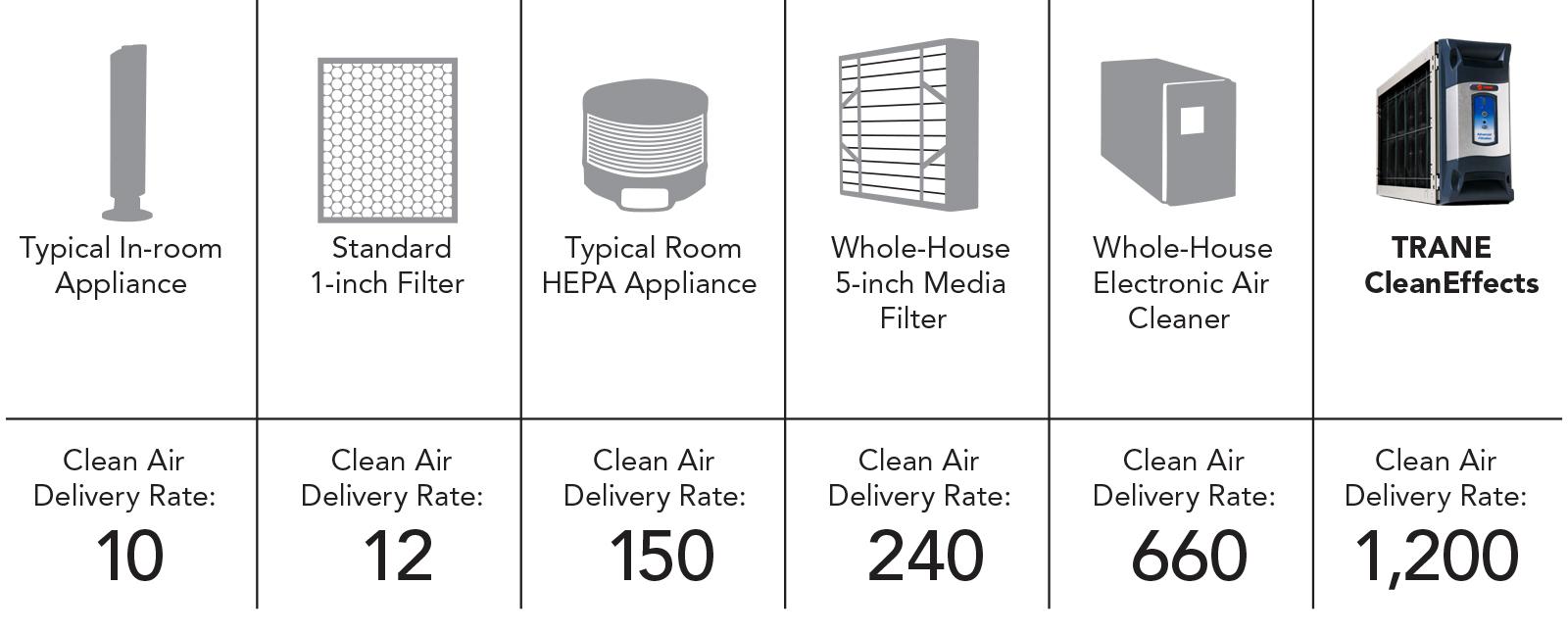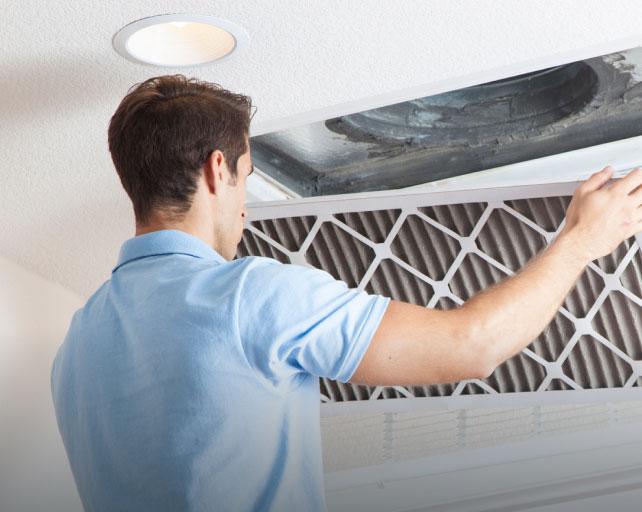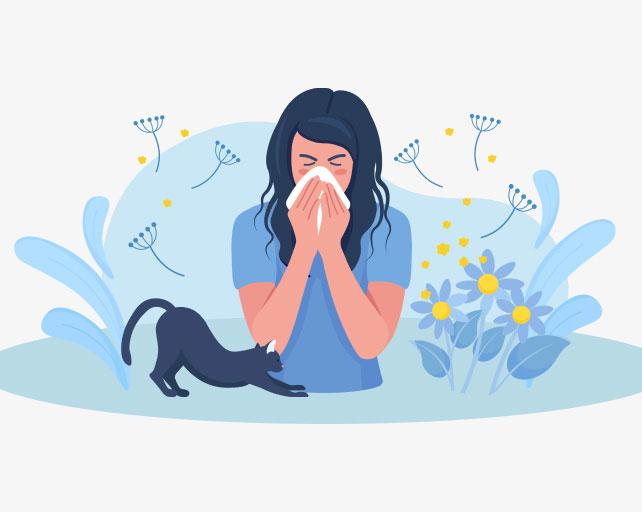Get the Most Out of Your HVAC System this Spring
Learn some tips and tricks for getting the most out of your HVAC system this spring.
By Anne Fonda
Spring and warmer weather come to regions of the country at different times. Northern states such as Minnesota and Maine might get heavy snowfall at the end of February and well into March, April, and May. But spring arrives earlier in southern states such as Texas, Georgia, and the Carolinas.
For the ultimate in springtime comfort, we’ve pulled together some tips to help you get the most out of your HVAC system, no matter where you live. Things we’ll discuss:
By following all of these tips, you can enjoy all spring has to offer without discomfort.
Learn the Ideal Thermostat Settings for Spring
The ideal thermostat settings for spring need to cover both heating and cooling settings. As we all know, spring can bring sudden heat where it feels like summer. But it can also bring cold rainy days where it feels like November or December.
The main idea is to maintain comfort while saving on energy costs. Plan on setting a schedule with different temperatures for when you are away from home, when you are home and awake, and when you are sleeping.
Recommended Temperature Range for Spring
If you have a well-insulated home and an efficient HVAC system, these temperature range recommendations from the Department of Energy (DOE) will keep you comfortable, but can also save you money on your utility bills.
Recommended Spring Thermostat Settings in Cooler Weather
- When You’re Away From Home: 65 Degrees Fahrenheit
- When You’re Home: 68-70 Degrees Fahrenheit
- When You’re Asleep: 65 Degrees Fahrenheit
You can continue to wear a sweater on cooler days and keep an extra blanket handy in the bedroom.
Recommended Spring Thermostat Settings in Warmer Weather
- When You’re Away From Home: 78-80 Degrees Fahrenheit
- When You’re Home: 72-78 Degrees Fahrenheit
- When You’re Asleep: 72-78 Degrees Fahrenheit
To maintain comfort at higher thermostat settings in warm or hot weather, run your ceiling fans, or install some if you don’t have them already. They can help you feel 5 degrees cooler than the thermostat setting. That means 78 degrees feels like 73 degrees. The smaller the difference between the indoor and outdoor temperatures, the lower your overall heating and cooling bills will be.
Utilize a Programmable Thermostat
If you still have a standard, non-programmable thermostat, consider an upgrade. Programmable thermostats are convenient and increase your home’s energy efficiency. They can also help remind you to change the filter or schedule maintenance.
You can use your programmable thermostat to set the ideal temperatures for spring cooling. Set schedules for daytime and nighttime for optimal efficiency. You’ll know when to switch from heating to cooling based on the temperature outside, the temperature inside, and your comfort level.
For example, a homeowner in a well-insulated, shaded brick house might not need to turn on the air conditioning as early as a homeowner in the same neighborhood who lives in an older home with no shade trees.
Upgrade to a Smart Thermostat
For ultimate comfort and control, consider the features and benefits of smart thermostats. Smart thermostats are programmable thermostats where you can set your temperature schedule. But they go beyond that. They connect to the internet and can adjust temperatures and humidity levels based on real-time conditions, without input from you.
You can also control your smart thermostat remotely with the Trane Home App. Say, for example, you’re at work and the temperature has risen steadily during the day. Using the app, you can turn on the air conditioning or adjust the temperature so that your home is comfortably cool when you walk in the door.
Learn how to pick the right thermostat for your home.
Beat Spring Allergies with an Air Purifier
If you suffer from spring allergies, you’re looking for ways to cope. Whether it’s cottonwood pollen in Texas, Juniper pollen in the Midwest, or oak pollen anywhere, you know when pollen season has begun.
One of the biggest things you can do for home comfort and indoor air quality is to prevent allergens from entering the air you breathe when you’re inside your home. You can do this by installing an air purification system such as an air purifier or air cleaner.
Do Air Purifiers Help with Allergies?
Most certainly. Air purifiers help with both allergies and asthma. An air purifier, also known as an air cleaner, can greatly reduce your exposure to pollen and other allergens such as dust, dust mites, pet dander, and smoke.
For example, the Trane Clean Effects® Whole-Home Air Cleaner captures particles as small as 0.3 microns. It performs 100 times better than a standard air filter.

If you keep your windows closed, and run your HVAC system at a temperature comfortable for you, an air cleaner can help keep pollen at bay. If you spend a lot of time outdoors during allergy season, you may want to consider showering and changing clothes after you come home, to rid yourself of the pollen that landed on your hair and your clothes.
Choosing the Best Air Purifier for Allergies
Choosing the best air purifier for allergies starts with doing your research. Determine if you want a whole-house air cleaner or if you want to try your luck with a stand-alone small appliance air purifier. Pro tip: get the best system you can afford.
Things to look for when selecting the best air purifier or air cleaner for allergies:
- HEPA filter that can remove a minimum of 99.97% of particles 0.3 microns in size
- High clean air delivery rate
- Zero ozone emissions
- High efficiency
- Certification from the Asthma and Allergy Foundation of America (AAFA)
Many air cleaners and air purification products promise to help control allergens. But some make exaggerated claims. Certification by the AAFA is one way to know that a product does what it says it does.
Schedule AC Maintenance
It is always a good idea for the health of your HVAC system to schedule AC maintenance each spring, ideally before things heat up. Sudden temperature spikes are common in the springtime, and you want your central air conditioning to perform flawlessly. The last thing you want is to flip the switch to cooling and have your AC blowing hot air.
What Does Air Conditioning Maintenance Include?
The most important air conditioning maintenance task falls to you, the homeowner. Make sure that you change your air filter regularly, and start pollen season with a clean filter. You should change thinner filters every 30 days (or more frequently if the pollen count is high). Always have the right filter on hand and stock up on air filters by ordering online. Be sure to order a filter specific to your system.
If you have an air purification system, follow filter guidance for your unit. Clogged or dirty air filters can make your HVAC system work harder and can lead to system problems. Avoid costly repairs and change the filter when you’re supposed to.
Professional AC maintenance from a certified HVAC technician will include:
- Cleaning the evaporator coil and condenser coils
- Checking the condensate drain line and pan
- Checking and cleaning the AC blower
- Checking electrical wiring and connections
- Lubricating moving parts
- Inspecting the refrigerant lines
- Checking the thermostat
- Leveling the outdoor AC unit
- Testing the AC system
By scheduling annual air conditioner maintenance, you help ensure that you can keep your cool as temperatures rise. Regular HVAC maintenance helps increase energy efficiency and prolongs the life of your system.
Contact Your Local Trane Comfort Specialist
If you’re interested in upgrading to a smart thermostat or adding an air purification system to your home to help combat allergies, browse our products, and then get personalized guidance on improving your home's air quality and comfort by contacting your local Trane Comfort Specialist™. Our specialists can also get you on the schedule for AC maintenance to help your system run most efficiently when warmer weather arrives.
Anne Fonda, Content Writer
A Content Writer with Trane Technologies, Anne Fonda researches topics and writes for Trane® and associated residential HVAC brands. She works in collaboration with Trane Technologies subject matter experts, offering easy-to-understand, informative content on complex topics. Her goal is to help consumers make informed decisions on the products and services they need.
She has written for HVAC and other service provider websites for over 16 years. Before transitioning to web content writing, Anne had a 14-year stint as an award-winning journalist. She graduated cum laude from the University of Missouri-Columbia School of Journalism.
When she’s not working, Anne enjoys playing word games, reading, gardening, spending time with family, and visiting gardens and museums.
Expert review by Jennie Bergman, Senior Product Manager, Indoor Air Quality




